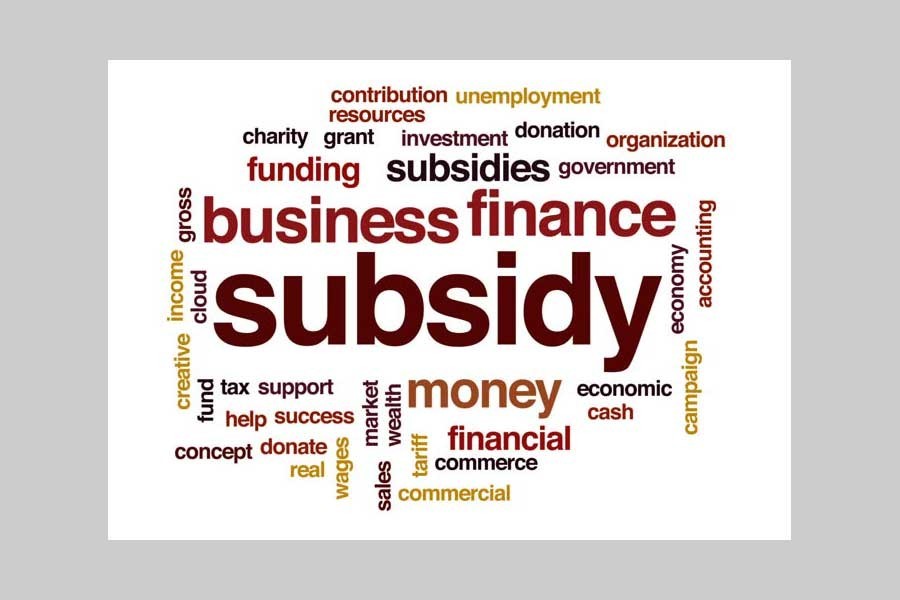Government subsidies shrank in 2016-17 for subdued demand from some sectors to the relief of fiscal administrators from budget-deficit burden, but economists foresee a reversal this year.
Officials concerned said the subsidy shrinkage last financial year helped the government lower the budget deficit to comfort zone of 5.0 per cent.
However, leading economists who are conversant with fiscal affairs told the FE that subsidy payments, especially for food and export sectors, might rise in the current fiscal year (FY) 2017-18.
They say government procurement of the staple and open-market sale amid a market upturn may push up the food subsidy this year.
Their predictions on subsidies for agriculture and power development for the current fiscal year, on the other hand, remain low as of FY 2017.
In the meantime, the earmarked subsidy remained unutilised by nearly 49 per cent or Tk 90.75 billion in the last fiscal year to June 30 last -- in what is seen as a very unusual fiscal event -- against its original estimation of Tk 177.29 billion or around 1.2 per cent of the GDP.
This allocation-utilisation gap is revealed in the latest statistics prepared by the office of the Controller General of Accounts.
People familiar with the development at the Ministry of Finance attributed the sharp fall mainly to low demand for subsidies from some key areas, like Bangladesh Petroleum Corporation (BPC), Petrobangla and agriculture sector.
They said there was an around Tk 70 billion worth of less demand from the three sectors which usually take higher shares of the ex-gratia payments from the exchequer.
"We saw agriculture subsidy significantly low, nearly Tk 60 billion," said one official at the MoF.
Estimation for the agriculture sector -- around 50 per cent of the total subsidy fund -- was originally at nearly Tk 90 billion for the last fiscal.
He also said Petrobangla also failed to take the subsidy money -- presumably for rock-bottom petroleum prices on the global market. The government originally allocated Tk 25 billion for the government-run petroleum agency.
There were lesser demands from the BPC and the Bangladesh Power Development Board (BPDB) for fund support in the year under review.
Dr Ahsan H Mansur, executive director at the Policy Research Institute of Bangladesh (PRI), told the FE that the price fall of fuel-related products helped lower the subsidy volume in the last financial year.
He mainly attributes the low demand for subsidy to cheaper petroleum imports from the international market.
"It is simply a fuel-related issue," Dr Mansur said.
Dr Zahid Hussain, lead economist at the Dhaka office of the World Bank, forecast that the monsoon floods and unstable staple market may push the subsidy payments up in the current financial year. "To my mind, food subsidy may rise this year," Dr Hussain told the FE.
He also said the recent power-price hike may keep its subsidy unchanged as estimated for the current fiscal year. Echoing his views, another economist, Dr Md Yunus, who is a senior research fellow at the Bangladesh Institute of Development Studies (BIDS), said the food subsidy should be allocated efficiently for avoiding misuse.
He noted that many people cash in on such troubled situation by business offers that often do not go in their favour if properly judged.
"I think the subsidy payment for distribution of food may be good but monitoring and efficient utilisation of the resources is very much important," Mr Yunus told the FE.
Total subsidy allocation for the FY 2018 is Tk.194.54 billion, which marks a decline by 40 per cent since its peak in FY13 at Tk.340.59 billion.


